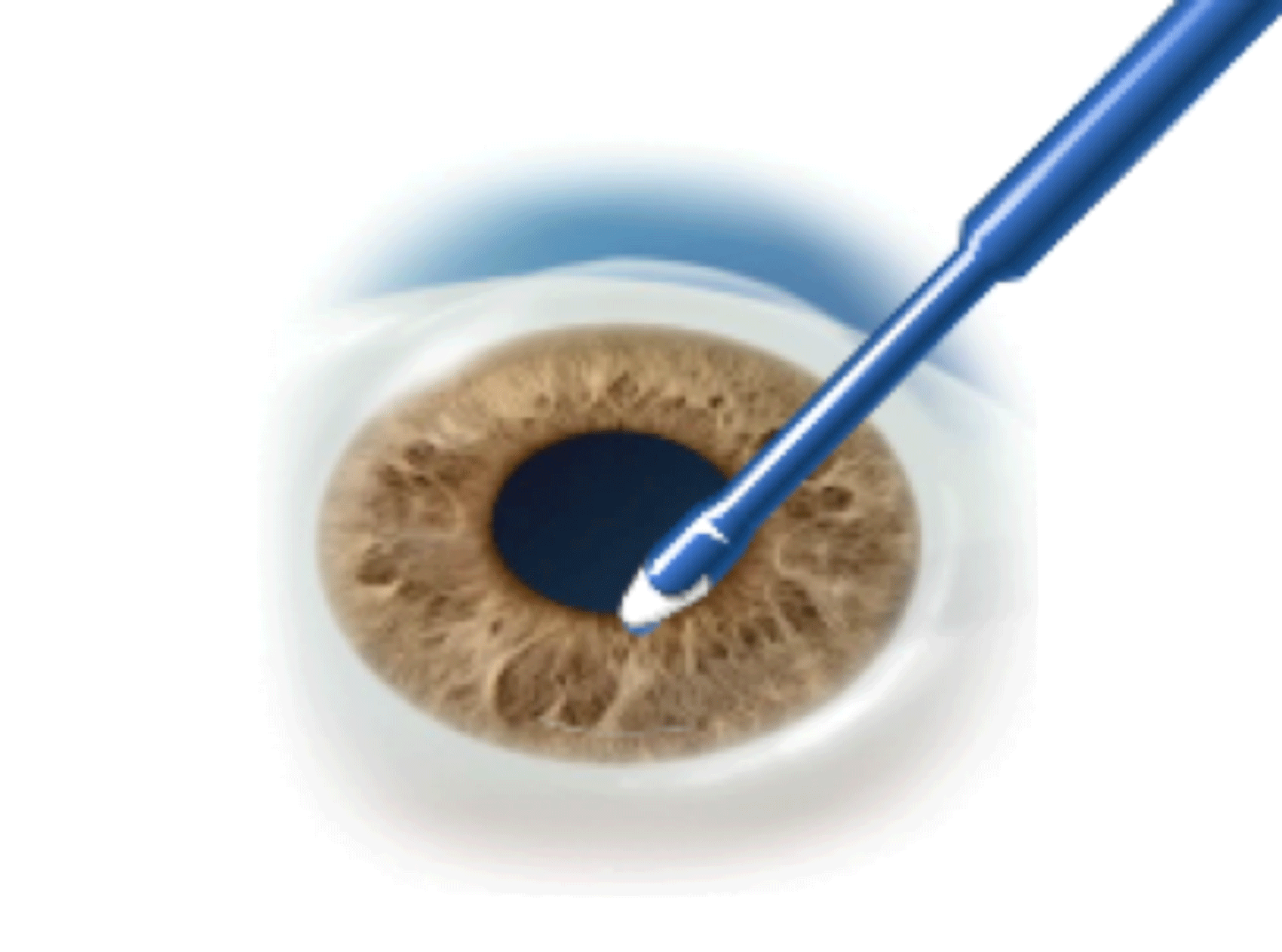

Cataract
Imagine you are looking through binoculars that are spattered with mud or trying to take a picture with a camera that has a lens smudged with fingerprints. That is what the world looks like when viewed through eyes afflicted with cataracts.
What are cataracts?
In many ways the eye works very much like camera. Just as in a camera each of our eyes uses a lens to focus light onto the back of the eye. Unlike a camera, however, our lenses are not made of a single material such as glass but a complex matrix of cells which have been stripped of many of the internal structures seen in a typical cell in order that they may be
transparent. These cells are packed into a container made of tough fibrous material and suspended by tiny ligaments behind the iris, the part of the eye which gives the eye its color. By changing the tension on the tiny ligaments the lens itself changes shape, allowing for near and far vision.
As we age, however, or under the influence of various diseases, problems can occur with the lens. Colored proteins can become concentrated with the lens this causes areas of the lens that were once clear to now turn white, yellow or brown. The cells that make up the body of the lens can become distorted. The result, light is no longer focused on the retina as it passes through the lens but is scattered in an irregular fashion.
Eye with cataract

Normal Eye
What are the symptoms of cataracts?
Obviously cataracts interfere with your ability to see. More specifically they can cause any of the following symptoms:
-
Cloudy or blurry vision
-
Inability to see well at night
-
Faded colors
-
Halos around lights
-
Intolerance of bright lights. Headlights, lamps, or sunlight may appear too bright
-
Double vision or multiple images even with one eye closed
What are the risk factors for cataracts?
Aging is the most common cause. There are, however, other risk factors associated with cataracts. Diabetes and hypertension may increase your risk for developing cataracts. Long term exposure to sunlight may also increase your risk. Smoking can double your risk of developing cataracts and makes them develop more quickly.
How are cataracts diagnosed?
At Sunalp Laser Vision we perform standard tests to determine the presence of cataracts
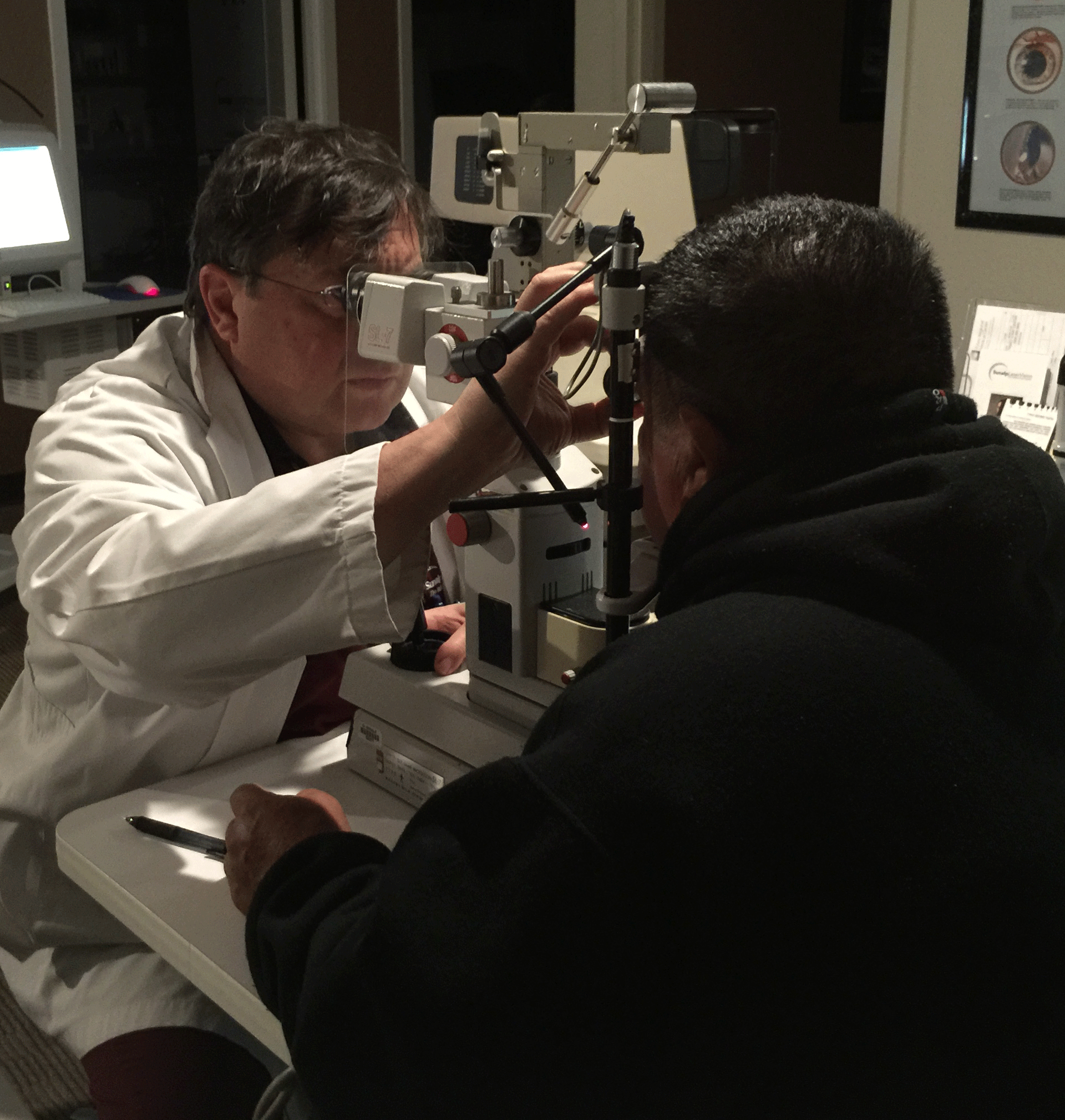
-
Visual acuity test–This test uses the standard eye chart test to measure how well you see at various distances
-
Dilated eye exam–In this test a few drops are placed on the front part of your eye to allow a more complete inspection of the eye's structure. This is a painless procedure, however, your vision will be blurry for few hours following this exam and you should not drive.
How are cataracts treated?
Cataract treatment depends both on their severity and on your personal preference.
Early cataracts may be treated with new (usually stronger) eyeglasses and anti-glare sunglasses, however, more severe cataracts or especially those that interfere with activities of daily life, usually require surgery.
Cataract surgery usually is a two step process: removal of the cloudy portion of the lens and (typically) placement of a new artificial lens.
At Sunalp Laser Vision we remove the cloudy portion of the lens using a technique called phacoemulsification, or "phaco" for short. A small probe is inserted into the lens that emits ultrasonic waves. Ultrasound breaks up the damaged human lens allowing for easy removal.
In the second step a small artificial lens is inserted after removal of the damaged lens material. This serves to focus light and act just as a normal lens would. Your body adapts to it without difficulty.
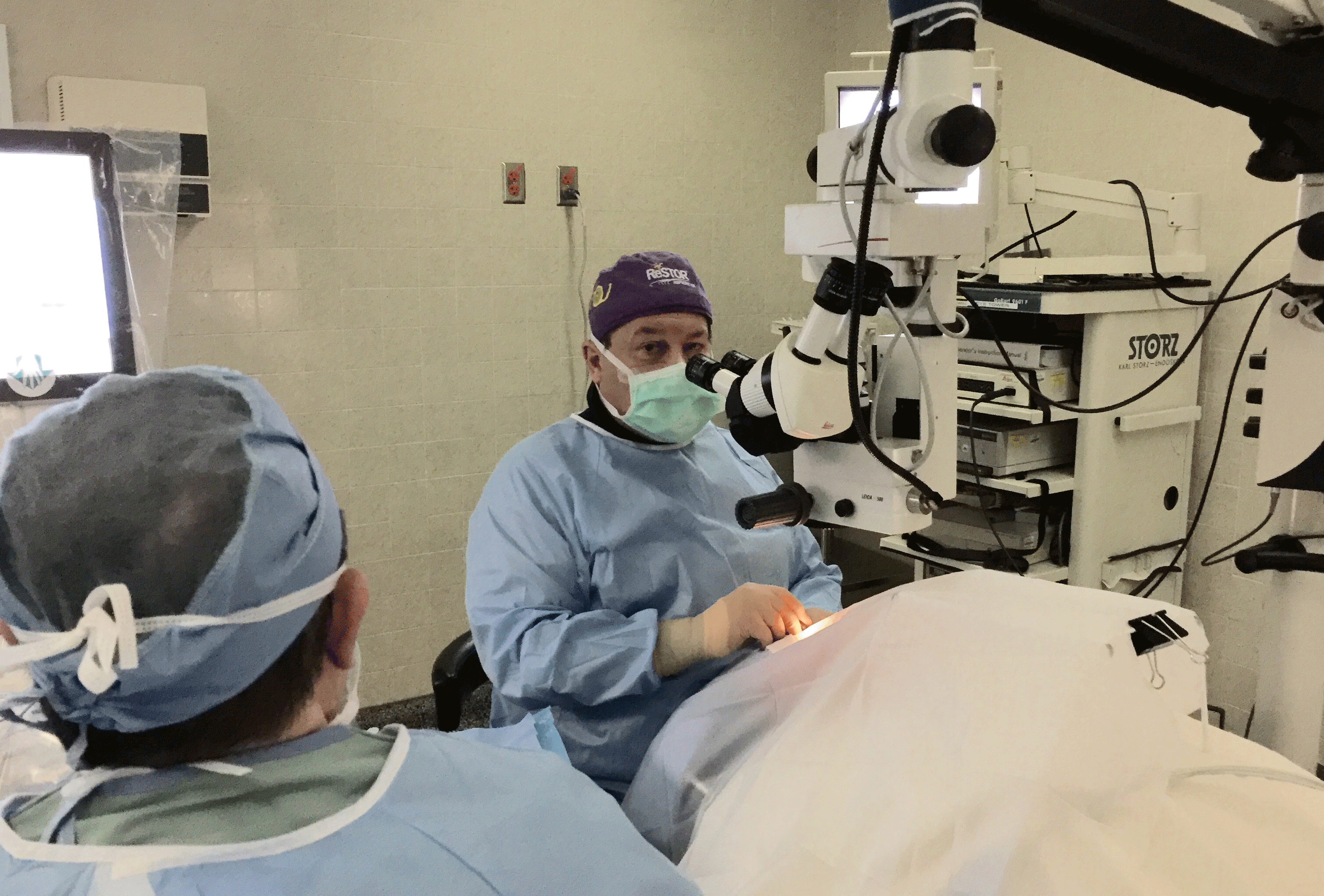
Why choose Dr. Sunalp?
-
Free initial consultation
-
Safe, affordable cataract surgery
-
Our surgical infection rate is ZERO (0)
-
DROPLESS cataract surgery
-
STITCHLESS cataract surgery (ReSure Sealant optimizes post-operative care)
-
Trained at University of Southern California (USC)-top 10 in the USA
-
Highly experience physician (30 years and over 25,000 cataract surgeries)
-
Board certified physician
-
Dr. Sunalp is a diplomat of the American Board of Ophthalmology, a Fellow of the American Academy of Ophthalmology, Fellow of the Royal College of Ophthalmology, England and a Fellow of the American College of Surgeons
-
Our equipment is state-of-the-art, including the most recent edition Phaco machine (Centurion, Alcon)
-
Offer different types of IOL implants: Restor, Tecnis
-
Toric IOL for astigmatism, Hoya preloaded monofocal, Monovision option also offered.
-
0% financing available
-
All inclusive cataract treatment
What
do our patients say?
Betty Jack–Multifocal IOL
I can fly again
For an airplane pilot, good vision is very important. At age 65, I have been flying for 47 years, and want to continue. But about 4 years ago, I noticed my vision changing in my left eye. It became blurry at all distances
Alex Caldwell, MD
Physician, Pilot, Actor

and I could not correct it by glasses. I barely passed my every 2 year FA flight physical the last time, and knew I would fail and be grounded from flying the next time. I consulted Dr. Murad Sunalp at Sunalp Laser Vision in Tulare, CA. He and his staff took great care in my special needs as a pilot. They recommended the best course of treatment for me, using their skills and their state of the art equipment. In February, 2014 I had a cataract extraction with intraocular lens implant. My vision is now outstanding, 20/20 or better. The colors are once again vibrant and beautiful. Driving at night is now a pleasure. Most important to me is that I can continue flying, which I enjoy so much.
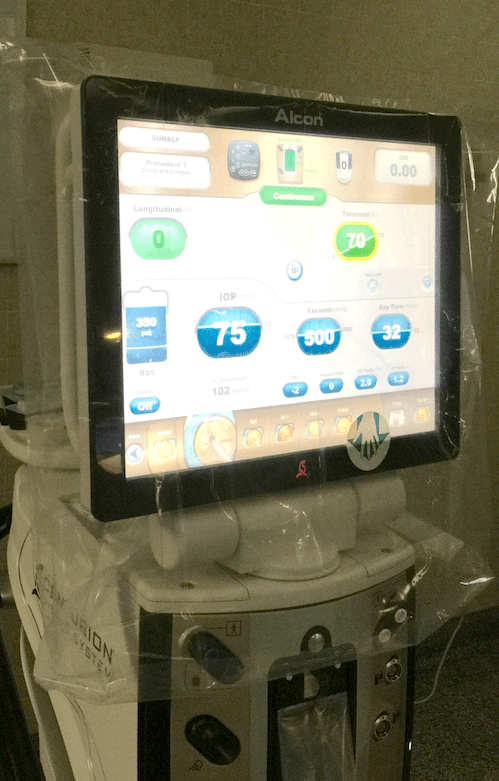
Dr. Sunalp performing a cataract surgery
Are there different kinds of artificial lenses?
Yes, personal preference becomes an important part of cataract treatment. Lenses vary on the quality of vision they provide, insurance coverage and cost. The following table summarizes the differences.
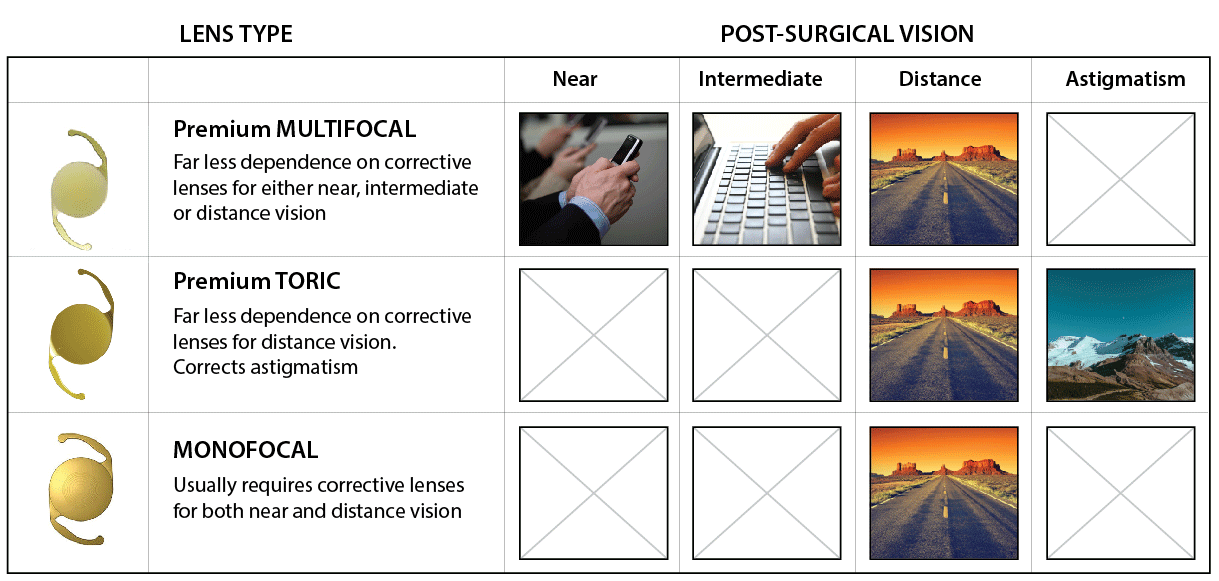
Medicare and most insurance companies will cover the cataract surgery and the use of a conventional implant. However, when a premium implant is used, Medicare and most insurance companies will cover cataract surgery. The cost of a premium implant must be assumed by the individual receiving implant.
What would my experience be like?
If you are thinking about or have decided to have cataract surgery you may further have questions and concerns. Although a consultation with an ophthalmologist is the best way to address all your concerns, here are answers to a few commonly asked questions.
What about my insurance company?
Most private insurance companies require prior authorization for cataract surgery. We will be glad to assist you with paperwork and will work directly with the insurance company to obtain necessary approval.
Does Medicare cover cataract surgery?
Medicare covers many medically necessary surgical procedures, like cataract surgery. For more information log on to http://www.mymedicare.gov
Do I have to wear a patch?
For the first 3-4 hours you will need to wear an eye patch and a week following its removal you will need to wear a protective eye guard at night.
Any pre-surgical restrictions?
You should NOT eat or drink anything starting at midnight on the day of your procedure and bring a driver.
News on Cataract Treatment!
Dropless Cataract Surgery
Dr. Sunalp is one of the first ophthalmic surgeons in San Joaquin Valley who adopted DROPLESS cararcat surgery.
A single intraocular administration during surgery may allow patients to avoid hassles and high-costs associated with post-operative drop therapy.
Why DROPLESS Cataract Surgery?
-
Reduces issues with patient compliance
-
Decreases overall cost
-
Single intraocular administration
There are studies showing that dropless cataract surgeries are the most effective in preventing endophthalmitis (internal eye infection), because drops have limited penetration.
ReSure Sealant
The ReSure Sealant is another new product used by Dr. Sunalp following cataract surgery. ReSure Sealant is the first-of-a-kind ocular sealant proven in the U.S. clinical trial to be safe and effective in sealing clear corneal incisions following cataract surgery.


